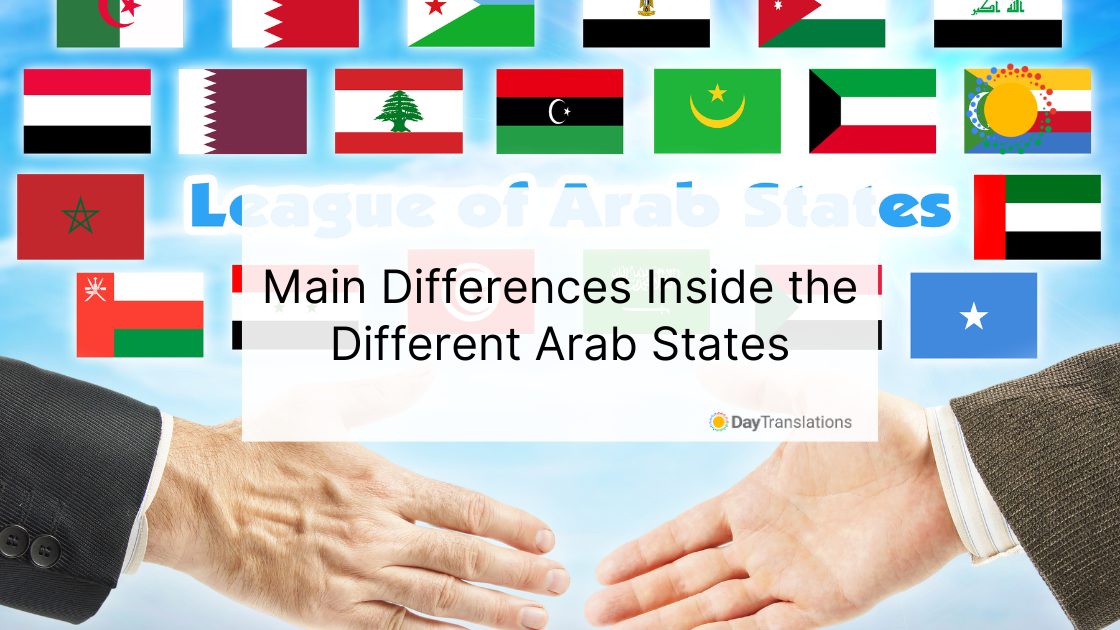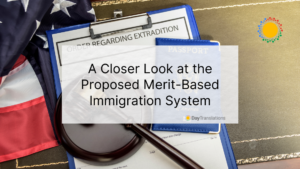The Arab countries have an aura of mystery around them and because not many know their culture, it is not easy to realize that there are so many differences between the Arab states.
People outside the region often generalize, so misconceptions about the Arab nations and their people are created. However, it is a fact that you cannot generalize because there is no such thing as one Arab society or culture. Each Arab nation’s culture is diverse and very rich, so differences exist among the countries as well as within each country.
Some things to keep in mind
In the Arab world, the dominant language is Arabic, although in some countries within the group, other languages such as French are spoken. The Comoros Islands, Djibouti and Somalia are included in the Arab world. While Islam is the dominant religion, other countries in the Arab group follow other religions. Another thing that should be kept in mind is that Turkey and Iran are not Arab nations.
However, it is important to remember that not all Arabs are Muslims in the same way that not all Muslims are Arabs. Not all Arab women are oppressed by their male counterparts. In some Arab countries, women enjoy a lot of freedom. Likewise, not all of them are required to wear a veil. In Syria, Egypt and Lebanon, women can choose whether to don a veil or not. In some countries however, even non-Muslims must wear veils.
What makes the differences?
In order to understand the difference in the Arab states, one of the first things to understand is that there are differences between the terms Arab, Muslim and Middle Eastern. Are you one of the people who think that all three terms are the same?
In reality you are not alone as most people in the West think the same thing. So here are some of the things to clarify the differences between the three.
1. Arab
Being called an Arab is based on a person’s ethno-linguistic roots. An Arab is a person who speaks Arabic as his mother tongue. Immigrants can also be called Arabs if their parents or their grandparents are native speakers of the Arabic language. According to the 2014 data from the CIA’s The World Fact Book, about 366 million reside in the Arab countries while 17.5 million reside outside the Arab world. The country with the most number of Arabs is Indonesia, followed by the United States, the United Kingdom and Canada.
Arabic is related to Hebrew and Aramaic and while Arabs speak Arabic, there are differences in the language based on their location.
The Arabic language is spoken as an official or one of the country’s official languages in the 26 territories and countries in Africa and western Asia. It is an official language in Algeria, Bahrain, Kuwait, Jordan, Lebanon, Egypt, Saudi Arabia, Qatar, Palestine, Oman, Morocco, Mauritania and Lebanon. It is likewise one of the official languages in Yemen, Western Sahara, United Arab Emirates, Tunisia, Sudan and Syria.
Arabic is one of the official languages in Chad and Djibouti along with French. In Comoros, it is an official language together with Shikomor and French. Arabic has a co-official status with Somali, which is spoken in Somalia. Tigrinya and Arabic are official languages in Eritrea. Iraq’s official languages are Arabic and Kurdish, while Arabic is an official language in Israel together with Hebrew.
In these countries, there are several ethnic groups and some of them are not native speakers of Arabic. Others may speak Arabic but they are not Arab by ethnicity, such as the non-Arab communities in Iraq and Chad. They learn to speak Arabic to facilitate communication.
Jewish communities in Iraq and Morocco also spoke Arabic before Israel was founded. They went back to Israel after 1948 but they still uphold some aspects of their being Arabs. Arab minorities are found in the United States, France, Turkey and Iran.
2. Muslim
According to the latest data available, there are about 1.8 billion (2015) Muslims around the world. The country with the highest number of Muslims is Indonesia while the largest regional concentrations are found in India, Bangladesh and Pakistan. Smaller Muslim communities are found almost anywhere in the world.
Muslims differ in the way they express their faith as well. Most Muslims practice Islam’s five pillars. This means that they profess their faith, make the pilgrimage to Mecca at least once in their entire lifetime, pray five times each day, give to the needy, and fast during the month of Ramadan.
Like other religions, some Muslims are not very devout and practice Islam differently from others. Aside from being a religious belief, Islam is considered a heritage and cultural identity.
3. Middle Eastern
In the West and other parts of the world, it is very common to say the Middle East when referring to most countries that belong to the Arab world. However, this is not a fixed category. The term was coined in the early part of the 20th century to identify the area between the Near East and India’s British colony. It is also based on the European perspective with the region they call the Middle East being located in the eastern side of Western Europe.
When you say the Middle East, you are referring to a region or a geographical area that share specific characteristics in contrast to the other areas located in North Africa or West Asia. The Middle East is a specific region based on its geographical location and borders. But the Middle East borders can change, depending on how you interpret the characteristics of the region. You can say that the Middle East is hot and arid if you refer to the western Asian region between the east (Indian subcontinent) and the west (Mediterranean). The Middle East could refer to the Muslim regions with similar Arabic culture according to history. Or it can refer to the economic and geopolitical region with vast oil reserves.
If you go by any of those definitions, you will be creating different maps. In most maps,
- Iran, Israel and Turkey will be included in the Middle East, even if these countries do not speak Arabic.
- Morocco, Algeria, Tunisia, Libya and Egypt are Arabic-speaking countries. They are not located in Asia but rather in North Africa.
- Except for Egypt, some maps do not include the aforementioned countries even if they have shared history and similarities with other Arab nations. It is surprising that these same maps typically include other countries like Pakistan, Afghanistan and Iran, non-Arab countries that have different languages, history and culture.
What is interesting is that the Middle Eastern concept is already adapted by the different languages spoken in the region. In Hebrew, the region is called mizrach tichon. Persians refer to it as khavarmiyaheh, while it is referred to as orta dogu in Turkish. In Arabic, Middle East translates into al-sharq al-awsat.
4. Politics and religion
Arab nations differ in their political systems, and religion sometimes becomes a part of politics. In Morocco and Jordan, they follow constitutional monarchies. The king in these two countries is not a religious leader. However, a person can be a legitimate contender to the throne if he is a direct descendant of Prophet Mohammed. Traditional monarchies rule the government in Saudi Arabia, United Arab Emirates, Kuwait, Bahrain, Qatar and Oman. Yemen, Libya, Iraq, Syria, Tunisia, Lebanon, Egypt and Algeria follow the parliamentary republic form of government. In Lebanon, representation in the parliament is divided among the Druze, Christian and Muslim.
5. Manner of dressing
Most Arab men wear flowing robes that allow air to circulate to cool their bodies. Some of the more modern Arab men combine Western clothes with their traditional garbs. The headdress pattern can be used as an indicator of their family, clan or tribe, but this is not exclusive.
The checkered headdresses can be related to their completion of the Hajj and the government.
- Generally, men from Jordan wear checked headdress in red and white. It can also indicate that the wearer has completed the Hajj and hails from a country with a monarchial form of government.
- Men from Palestine typically wear the checkered black and white headdress. Arab men who wear this type of headdress usually come from countries ruled by a president. It also indicates that they have completed the Hajj.
- Men who wear the black turban are typically linked to the Shi’a clergy.
- The men who wear a white turban belong to the Shi’a hierarchy’s lower ranks.
Women from Saudi Arabia are more traditional in the way they dress compared to the women in Egypt. The traditional dress for Arab women is called the chador, jilbob or abayah, which covers the whole body. They also wear a veil or hijab. Other women choose to cover their faces, too. Women who live in the rural areas usually work in the fields. Thus, they tend to wear clothes that allow them to move freely and in lighter weight and colors.
These are some of the key differences between Arab states that make each Arab culture unique.
Ensuring the accuracy of Arabic translation
Just like any language that has many variants, it is critical to ensure that you are getting the most accurate Arabic translation from your Arabic translation provider. Day Translations, Inc. is a professional translation company that works only with native speakers who are located in-county. This ensures that our clients receive accurate Arabic or any other language translation, whether the translation project is large or small.
Whenever you require Arabic language translation or interpreting services, be sure to get in touch with Day Translations, Inc. Our customer service representatives speak your language. You can get in touch with us by calling 1-800-969-6853 or send us an email at Contact us. We’re open 24 hours a day, every day of the year.
Image Copyright: tashka2000 / 123RF Stock Photo












Sorry, the comment form is closed at this time.